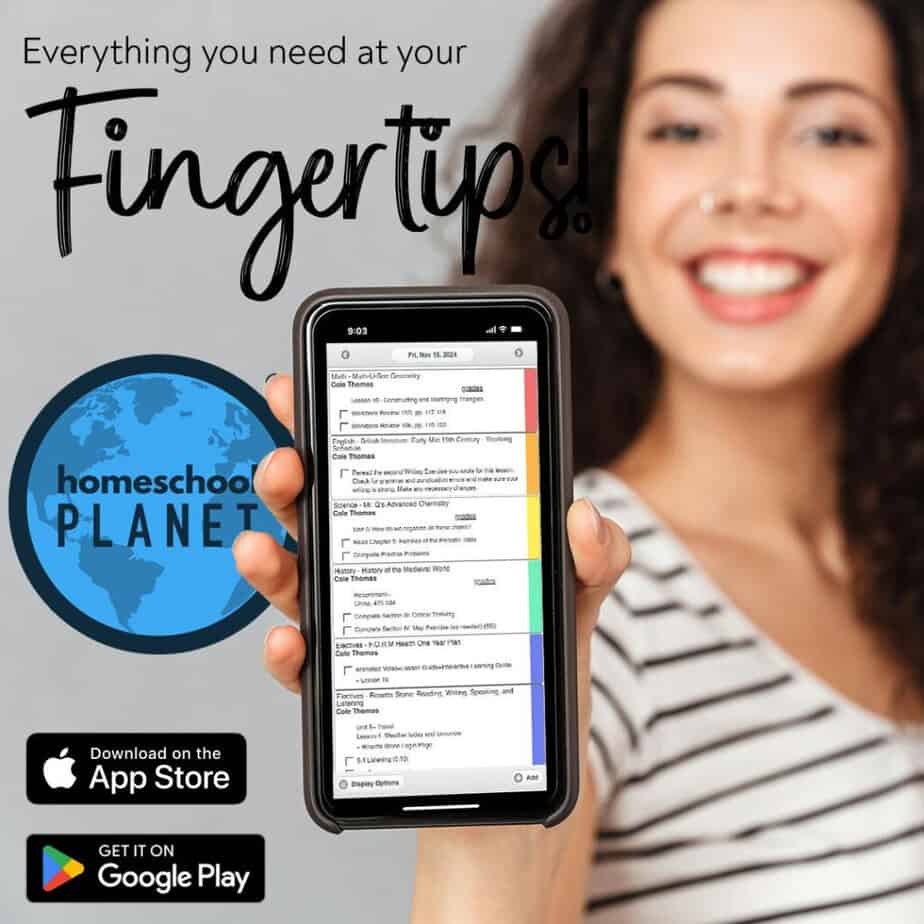
Table of Contents
What To Do When Your Homeschool Routine Isn’t Working
If you have been following a daily homeschool schedule but it isn’t working, there could be a lot of reasons why. Rather than giving up, there are things you can do to revamp your daily routine to make it more effective. Here are some ideas about what to do if your current homeschool routine isn’t working.
Discover the Reason Behind Your Homeschool Routine Problems
It can really help if you identify why your current homeschool routine isn’t working. Are there any specific needs or areas you struggle with? For example, your personal routine may require you to exercise early in the morning. However, this may make you feel even more tired, rather than energized. It would then cause you to struggle with the rest of your day, and your homeschool routine might suffer.
It could also be that your kid and homeschool stage have changed since you created your first routine for your homeschool. Once you know why your homeschool routine isn’t working, you can take steps to change it. Depending on the issue, you may need to change your homeschool expectations or the tools and equipment you use throughout your homeschool day. You may find that your homeschool schedule needs an update. Perhaps in the past, a detailed schedule worked well, but now that your kids are in different phases, it might be time to try new things.
Tailor Your Homeschool Routine
Is your routine currently tailored specifically to the needs of your homeschool? If not, that could be a key reason why it isn’t working. Many people make the mistake of copying somebody else’s routine. While some things may work well for you, others may not.
So keep what works and customize the areas that need a bit of tailoring to fit your unique homeschool situation. Look at what specifically isn’t working and what you could do instead. Don’t worry, there are excellent resources below to help you fine-tune and create the perfect homeschool schedule and routine!

Home Educating in the UK or Europe?
In the UK and Europe, the home education landscape is changing dramatically and quickly. Learn how you can use the US High School Diploma & Transcript Model for success in your UK homeschool.
Investigate Free Homeschool Planners & Resources
These days, there are lots of free resources to help in all areas of life. If you are struggling with time management, even with a routine, you could utilize free time management tools. Look for anything that makes your daily homeschool routine easier. What can you do to streamline the tasks on your daily to-do list? If you can utilize free tools to take care of daily tasks more quickly, it will free up more time for you. Whether you use a paper planner or a digital planner, the resources below will help you find the perfect homeschool planner for you and your family.
Homeschool planning can be a major part of life as a homeschool parent. A large family with music lessons, field trips, and extracurricular activities makes planning a weekly schedule more like a plate-spinning circus act for even the best homeschool moms. All in all, the most important thing is the find what is the best fit for your family.
With the many different types of homeschool schedules available, you’ll want to plan a daily schedule that includes time for independent work for older kids and fun activities, especially for younger children.
- Best Online Homeschool Planner For Busy Families
- The Positive Power of A Homeschool Journey Partnership

Leave Room For Flexibility
If your current routine is too strict, it could be the reason why it isn’t working. You need to leave some ‘wiggle’ room for choices in your routine. Does your family enjoy a bit of adventure during your homeschool day? Switch it up sometimes so your family doesn’t get bored. Boredom is the number one killer of daily routines. While there is bound to be some level of monotony, daily homeschool routines can be tweaked to match your daily needs and homeschool style. If the weather is gorgeous, move lessons outside. Hit by a snowstorm? Add an igloo-building project and learn about Eskimos. Keeping things flexible fosters creativity and curiosity.
To find the best homeschool schedule for your family, ask another homeschooling parent how they plan their homeschool week. Then, try a couple of sample homeschool schedules for a few weeks and see how it works. Tweak the daily plan where needed and find the best way to accomplish the core subjects like language arts, math lessons, and a little extra time for science experiments or an educational board game.
- How To Turn Any Homeschool Curriculum Into A Family Travel Adventure.
- Planning for Adventure in Your Homeschool – Educational Fieldtrips
Change Your Routine
How do you currently record your daily homeschool routine? Changing it up could help you make it more effective. Rather than simply using a to-do list, schedule your homeschool rhythms into your life in different ways. When you schedule something, you are more likely to complete the routine or task. Find a planner that fits your needs and add assignments, projects, and regular appointments or chores to it. Help everyone learn to check their planner to know what is going on during their homeschool day.
- Ultimate Field Trip Planner
- Inspire Learning: Homeschool Roadmap
- 65 Ways To Have Fun With Your Kids At Home
- The Secret To A Perfect Virtual Field Trip Is Easier Than You Think.
As you can see, there are many things you can try if your daily homeschool routine isn’t currently working for you. Your homeschool’s needs and goals change over time. Make a point to assess your routine regularly and adjust your routines to reflect your progress and needs. By making small changes to your homeschool routine when needed, you’ll find it is much easier to stay on track throughout the school year.
Homeschool parents will find that a flexible block schedule works well and allows for each child’s learning style to flourish. Keep in mind that once kids get the wiggles out, they are able to focus better, so plan time slots or blocks for outdoor play, exercise, and even a little bit of free time.










